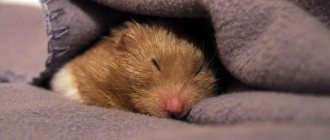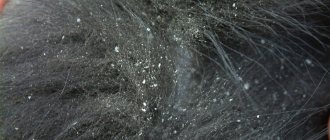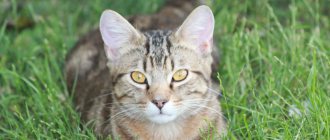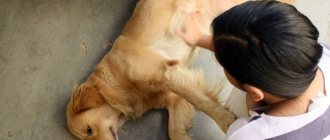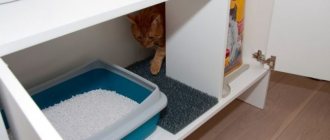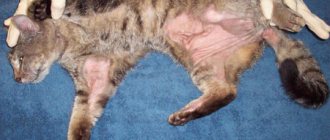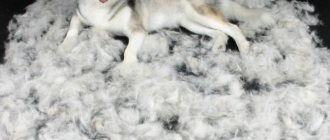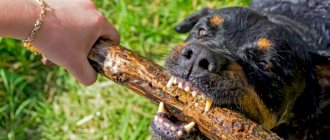- What does a centipede flycatcher look like, what kind of “beast” is it?
- How do flycatchers hunt and who do they eat?
- Centipedes in the apartment: reasons for their appearance
- Is the house centipede dangerous or not?
- How to drive away centipedes
- Harmless ways to get rid of house scolopendra
- Chemical control agents
- Centipede flytrap and traps
We are not afraid of flies, spiders, cockroaches, because we see these insects more often and are familiar with the behavior. The common house centipede flycatcher is a cautious insect, hunts at night, is rare, so the frightening appearance of the alien frightens and arouses mistrust. In addition, apartment residents do not know the habits of the unfamiliar creature or how to behave with it.
What does a centipede flycatcher look like, what kind of “beast” is it?
So, they call it: house centipede, common flycatcher, centipede, house centipede. This is not an insect, but an arthropod, breathing through tracheas.
Arthropods of the order of bipedal centipedes are divided into groups:
- Kivsyakov (forest invertebrate centipedes);
- Multilinks (blind centipedes that live everywhere);
- Armadillos (order of woodlice millipedes);
- Pauropods and symphylos (blind arthropod polypods that live in the soil);
- Labiopods (scolopendra).
The apartment from this entire set is inhabited by the common house centipede flycatcher - with a flat oblong body 3-6 cm long, light brown in color, rarely gray.
The legs and body are covered with stripes and hairs. The body of the arthropod consists of 15 segments, each with a pair of legs on the sides. A young centipede has 4 pairs of legs. An adult centipede flycatcher has 15-40 pairs of legs 3 mm each.
The last limbs are long, even exceeding the length of the body. Interestingly, a damaged or lost leg grows back. The domestic scolopendra runs 30-40 cm per second.
The whiskers are the same length as the legs, so it is easy to confuse the head with the back. With the help of antennae-catchers, which work like locators, the house centipede explores space, senses changes in environmental temperature and navigates the area.
Since the centipede insect lives in an apartment and feeds on insects, its pair of front legs has acquired the role of jaws for obtaining food in hard-to-reach places. On both sides of the head there are organs of vision that help to see in a dark room.
These inhabitants are hunted by rats and cats, which is harmful for the hunters themselves, because the house flycatchers are infected with parasites.
Centipedes are fertile: the female's clutch consists of 60 eggs protected by stickiness and hidden in a hole or crack, which the female covers with her body and legs.
The lifespan of these arthropods is 7 years and more often in one place, but they come to the apartment with the onset of cold weather. During severe cold weather, they sometimes go into suspended animation, waking up in the spring.
Origin
The Venus flytrap (see photo) was discovered by Arthur Dobs in 1736, who compared the plant to iron traps used to hunt foxes. It is thanks to its unusual leaves that the flower quickly gained great popularity and aroused the interest of almost everyone.
The flycatcher was later imported to England. In botany, the plant already officially occupied its niche in 1970 thanks to John Ellis, a famous British naturalist.
flycatcher
From its natural habitat, namely wetlands in North and South Carolina (USA), the Venus flytrap has moved to many window sills and greenhouses around the world. In these areas, summers are moderately warm and dry, while winters, on the contrary, are quite cold.
Charles Darwin himself paid great attention to this plant, who studied its abilities and was one of the first to reveal some of its secrets. The appearance of the flycatcher's mouth in order to catch and digest small organisms was only a hypothesis until recently
Soon the curtain rose and the flower appeared in all its glory.
When an insect first touches the flytrap leaves, the plant does not react in any way, it simply goes into standby mode, which lasts about 20 seconds. The carnivorous plant is able to avoid unnecessary “activation” of the trap at the slightest breath of wind or dust particles falling on the leaves.
Homeland of the flycatcher
A team of German biologists went even further in their research. Using molecular biological techniques, they determined that the photosynthetic particles in the plant's leaves are not very different from standard leaves. This is not such an interesting result, but it has its weight in botany, since it is one of the few pieces of evidence that the flycatcher's mouth most likely evolved from its leaves.
How do flycatchers hunt and who do they eat?
Flycatchers choose places with insects and beetles harmful to humans: black cockroaches, flies and fleas, moths and spiders, crickets or termites. They go hunting at night, but there are also hunters who wait for prey during the day, settling on the floor, climbing onto the ceiling or onto the wall.
They sit for hours without moving. As the prey approaches, they attack at lightning speed, neutralizing the prey by injecting poison into 2-3 insects at once. He slowly eats one dish and holds another with his legs.
Interesting behavior
The flycatcher makes good use of its long legs. Can move at alarming speeds - the equivalent of over 64 kilometers/hour in human terms. This will scare even the most die-hard arthropod lover. Athleticism doesn't have to scare you. The house flycatcher is simply well equipped to stalk and catch prey.
Oddly enough, the severed leg will continue to move for several minutes after its owner leaves the stage. They shed even as adults and regenerate lost limbs.
They feed on spiders, bedbugs, termites, cockroaches, silverfish, ants, and other domestic arthropods. The poison is secreted through the forcipules. Not through the lower jaw, so they burn and do not bite. These are night hunters.
Despite their developed eyes, they rely on their whiskers to hunt. The antennae are sensitive to both odors and tactile information. They use mandibles and legs to hold prey. Thus, they can deal with several small insects at the same time.
To catch prey, they either jump on it or use their legs in a technique described as a "lasso". The use of legs to subdue prey is also described.
We suggest you read: How do worms get out of the human body?
They have adapted their feeding pattern to the type of danger the prey may pose to them. For wasps, retreat after applying the poison to give it time to take effect.
Is the house centipede dangerous or not?
The flycatcher does not harm humans. However, it should not be touched or frightened, because the centipede flytrap bites, however, only for the purpose of protection. The appearance of the centipede is frightening - the number of legs, long moving mustaches and lightning-fast movement.
Also, this arthropod does not harm furniture, wallpaper and other objects in human housing. Night hunting of creatures eliminates encounters and sometimes residents do not even know that centipedes live in the apartment.
If a bite occurs, which is unlikely, the skin turns red and a slight burning sensation is felt - cold water and hydrogen peroxide will help.
Preventive measures
After getting rid of centipedes, owners need to use prevention methods. Arthropods will not be able to enter the apartment if these conditions are met:
- maintain order in the local area;
- promptly clear the garden of fallen leaves and the vegetable garden of dry grass;
- clean and remove construction waste from the yard;
- remove climbing plants from external walls;
- carefully seal cracks in walls, floors, and window frames;
- strengthen small mesh on ventilation ducts;
- ventilate wet areas well;
- quickly eliminate leaks and condensation;
- fight insects that have entered your home.
It is easy to defeat this creature if you carry out preventive measures in a timely manner.
Harmless ways to get rid of house scolopendra
1). Eliminate the source of moisture because flycatchers cannot live without water.
For this:
- Clean the kitchen and bathroom, clean places where a rag rarely penetrates, add bleach and chlorine to the water, do not store garbage;
- Remove wet sources (wet rags and towels, replace the bathroom rug);
- Eliminate condensation, wipe the walls and ventilate the bathroom;
- Install, if required, dryers and fans;
- Do not leave water in trays with indoor plants.
2). In a private house - clean the basement, get rid of mold and dampness.
3). If there are leaks, repair or replace leaking plumbing fixtures and pipes. Re-glue the peeling wallpaper and return the fallen tiles to their places.
4). Block the crawling paths of centipedes: fill cracks and crevices with silicone sealant, cover windows with mosquito nets, and cover ventilation ducts with fine-mesh grilles. Don't forget to clean the grates regularly.
5). Remove insects - the food of centipedes. But poisons that act on cockroaches and flies will not affect flycatchers - they develop a persistent addiction.
6). It is not difficult to remove using a humane method. Centipedes remember what happened and how they felt. With the caught animals, which were taken out and released on the street away from the house, others will also leave.
Where does it come from?
Insects come in search of food from the street or from neighbors. Their favorite habitats: damp basements, underground floors, ground floors. From here, centipedes spread throughout apartments or rooms in the house. If the object is humid and the light is dim, flycatchers will settle here. Answering the question of what centipedes usually eat will help get rid of these insects. They are attracted to domestic cockroaches, flies, fleas, etc.
The centipede also lives outdoors. Outside the room it is hidden under a layer of foliage. When going in search of food, a centipede can crawl into a house. If she finds suitable living conditions for herself, including an inexhaustible source of food, she will stay here for a long time.
Clean up and the uninvited insect will disappear from the apartment
Chemical control agents
The use of repellents or extended-spectrum insecticidal sprays, which have a high concentration, will help drive out multipedes that have multiped and come across even during daylight hours. There are no special preparations for house centipedes in the apartment.
Popular drugs:
- Aerosol Raid. Non-toxic product with lavender scent.
- Liquid Medilis-Ziper for dilution with water and spraying. It has a pungent odor and requires respiratory protection when working.
- A strong insecticide with lambda-cyhalothrin has no pungent odor and does not harm people or pets.
- Globol (odorless gel) has strong toxicity, flycatchers will not return soon.
- Great Warrior (gel) fights cockroaches and ants, but flycatchers and earwigs also do not like this product.
As a home remedy, you can sprinkle boric acid powder where centipedes run around the apartment.
Closing mechanism
The top of each side of the Venus flytrap trap is colored with anthocyanins, pigments that give the surface of the trap a red color. This coloring is the main bait for insects in this plant. The trap cells also secrete a sticky substance, which is a type of protein. After the insect crawls into the trap, it begins to flounder on the slippery and sticky surface, greedily licking off the substance, touching the trigger hairs that signal the trap to slam shut.
The trap closing mechanism of the Venus flytrap can be divided into four main phases:
- Initial slamming.
- Compression phase.
- Sealing phase.
- Re-opening phase.
The "descent hairs" are indicators for the plant, which by their vibrations determines that potential prey is trapped. If two hairs are touched at once or one hair twice in a row within 30 seconds, the trap slams shut in a tenth of a second.
The slamming motion of a Venus flytrap is one of the fastest movements that plants are capable of. The amount of time it takes for Dionaea muscipula to slam shut varies greatly depending on ambient temperature, light, plant health, and other factors. However, the trap of a healthy plant in warm conditions slams shut very quickly.
Recent research conducted in 2005 by Harvard scientists shows that the Venus flytrap's trap slamming mechanism is based on biochemical and elastic processes. They cause the leaf tissue to stretch to the point of instability, and after touching the hairs, the plant instantly pumps water into the leaf, causing slamming.
Centipede flytrap and traps
Trap boxes help, but rarely. They need to be placed on the floor; insects and centipedes crawl in and stay there.
Adhesive tapes will not bring success. The centipede flycatcher will come off without sparing the remaining legs, which will later grow back.
When all else fails, they resort to the services of professionals to carry out disinfestation with chemical agents. After this, you need to leave the apartment for a walk for 4-5 hours, and when you return, open the windows for ventilation. Do not wash the floor for 2-3 days.
Lice: always nearby - both in the house and on the street
The louse is a classic blood-sucking parasite. These insects are not attached to the house, but directly to the person himself, and are not capable of living outside his body or at least clothes. That is why lice cannot be called typical household insects.
The photo shows a head louse, which, among other things, is a carrier of some dangerous infectious diseases:
And the photo below shows a pubic louse, the presence of which is considered a venereal disease (another name is the louse, Pthirus pubis):
Adult parasitic lice and their larvae spend most of their time tightly clinging to a person’s hair, and in order to feed, they crawl to the surface of the skin every few hours. Their eggs in a dense shell are called nits and greatly spoil the appearance of the hair.
Due to the fact that lice feed on human blood and, accordingly, constantly bite him, their presence causes severe itching. Today there is a large arsenal of specialized lice products: pediculicidal shampoos, sprays and combs.
Are centipedes poisonous?
Centipedes themselves are not poisonous, but many of them have glands containing poison. Arthropods need it in order to paralyze the prey and eat it. But the toxins also protect the centipedes themselves from the danger of becoming someone’s dinner: the liquid they secrete often smells very unpleasant - and the predators run away!
Types of centipedes
But more precisely, it is the insects and slugs they hunt, not humans, who should be afraid of the toxic composition of the centipede repellent liquid. Although if you get in their way, they will most likely bite you. Scientists reassure everyone who is worried: “Centipedes do not carry diseases.” These are not mosquitoes, among which the malarial one can creep in - centipedes cannot cause much harm to humans.
Many of these creatures have glands on the sides of their bodies that secrete poison. Therefore, it is better not to touch them with your bare hands, take care of your skin: their “defensive spray” is very caustic and blisters may appear on your hands! And, of course, do not rub your eyes after touching such a creature and wash your hands thoroughly.
But the one you should definitely be wary of is the scolopendra. This is one of the centipede family that people should avoid. The venom of scolopendra is somewhat reminiscent of scorpion venom in composition! And we'll talk about this below.
What to do if you are bitten by a scolopendra
But if you do get bitten by a scolopendra, be prepared for the following consequences (we’ll warn you right away, not fatal). The bites can be very painful and go away slowly over 1-2 days. The main symptoms that you may experience: at the very moment of the bite there will be a sharp and prolonged pain; the severity of the pain can vary (from slight to “10” on a 10-point pain scale); body temperature may increase; you may feel severe weakness; Most likely, the sensitivity of the skin in the bite area will significantly increase, swelling and redness will appear, and loss of sensitivity and a feeling of numbness may also occur.
Scolopendras are somewhat similar to wasps, which do not leave a sting in the wound and can sting a person several times in a row. Often, at the moment of detection by a person, this creature continues to inflict multiple punctures, introducing even more poison. Centipedes usually bite when a person is resting in bed, but they can also crawl into clothes and bite the moment you start getting dressed.
But there is good news: scolopendra bites are not fatal! For a person to die from its poison, he must be bitten by several thousand individuals at the same time!
Helpful advice: if you are bitten by a scolopendra, find a heating pad at home, fill it with moderately hot water (up to 45 degrees C) and apply it to the bite site - this simple measure should bring relief. Scientists have not yet found an explanation for this phenomenon, but they suspect that this is possible due to the fact that some components of scolopendra venom are unstable to heat. The second remedy is ice and analgesics.
Are centipedes dangerous for your home?
And you don’t have to worry about clothes, paper documents, furniture and other items. A centipede is not a moth or a silverfish. She is not at all interested in your things. Another thing is that some centipedes can spoil the air in the house due to the fact that they secrete a bad-smelling secretion - but even that is unlikely - there must be too many of these arthropods in your house for you to smell it. In addition, since centipedes are plant scavengers, they may become interested in rotting wood. We advise you to check attics and basements more often for moisture and for such “yummy things.”
We hope we didn't intimidate you. Therefore, at the end, in order to “whiten up” our heroes a little, let’s tell you how centipedes are useful. They are very active in destroying pests. Their diet includes bedbugs, flies, cockroaches, termites and even spiders. So sometimes centipedes turn into real “guardians of housing” from even more harmful creatures. Therefore, if you are not afraid of such many-legged neighbors, then live with them “in peace and harmony.”

